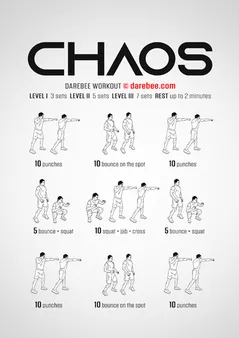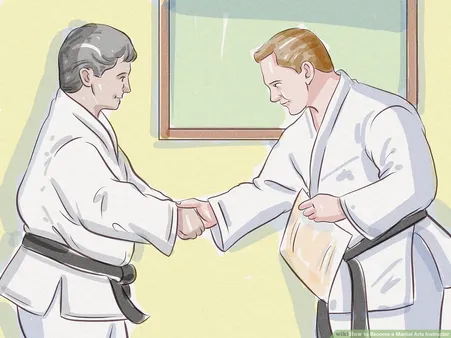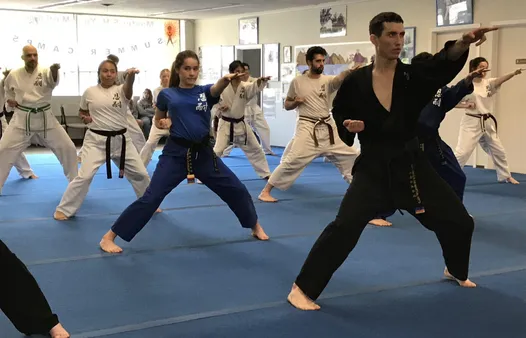Table of Contents
In the realm of martial arts, achieving mastery requires dedication, discipline, and a comprehensive approach to training. Whether you seek self-defense skills, physical fitness, or mental fortitude, martial arts offer a path to personal growth and empowerment. This guide delves into the intricacies of martial arts training, providing a roadmap for aspiring martial artists to unlock their full potential.
How to Train Like a Martial Artist: Unleash Your Inner Warrior
I. Learn the Basics: Foundation of Martial Arts Training
Learn the Basics: Foundation of Martial Arts Training
Mastering the Fundamentals: A Pathway to Martial Arts Proficiency
Martial arts encompass a diverse range of disciplines, each with its unique techniques and philosophies. Despite these variations, they share a common foundation of fundamental principles and skills that serve as the bedrock for further advancement. Embarking on a martial arts journey requires a solid understanding of these basics, which lay the groundwork for developing proficiency and unlocking the true essence of the discipline.
- Stance:
- Footwork:
- Punching:
- Kicking:
- Blocking:
Technique | Description |
Stance | The foundation of balance and stability, proper stance enables efficient movement and effective techniques. |
Footwork | Agile and precise footwork allows martial artists to maneuver swiftly, evade attacks, and position themselves for optimal strikes. |
Punching | The most fundamental striking technique, punches vary in speed, power, and trajectory, targeting different areas of the opponent's body. |
Kicking | Utilizing legs and feet, kicks are powerful and versatile strikes that can be executed from various angles and distances. |
Blocking | A defensive technique that employs hands, arms, legs, or body to intercept and deflect incoming attacks. |
The Significance of Repetition and Practice: Embodying the Martial Arts Spirit
In the realm of martial arts, consistent practice is not merely a means to improve; it is an integral part of the learning process itself. Repetition ingrains techniques into muscle memory, transforming them from conscious actions to instinctive reactions. Through dedicated practice, martial artists develop a deep understanding of the principles underlying each technique, allowing them to execute them seamlessly and effortlessly.The act of repetition also cultivates mental focus and discipline, essential qualities for navigating the challenges of martial arts training and real-world scenarios. By persevering through the rigors of practice, martial artists develop resilience, perseverance, and an unyielding spirit, the cornerstones of true martial arts mastery.
Building a Strong Foundation: The Key to Unlocking Martial Arts Potential
A firm grasp of the fundamentals is not just a stepping stone; it's the cornerstone of a successful martial arts journey. These foundational skills provide a solid framework upon which more advanced techniques can be built, enabling martial artists to progress seamlessly and confidently. With a strong foundation, they can explore the intricacies of their chosen discipline, refine their techniques, and unlock their full potential as martial artists.Remember, the path to martial arts mastery begins with mastering the basics. Embrace the journey, dedicate yourself to consistent practice, and experience the transformative power of this ancient art form.
- Related post: How to Do a Handstand: A Step-by-Step Guide for Beginners
- Related post: The Benefits of Gymnastics for Kids: Building Strength, Flexibility, and Confidence
II. Developing Physical Strength and Endurance
Developing Physical Strength and Endurance
Building a Strong Foundation
- Start with a solid foundation of strength training exercises.
- Focus on compound movements that work multiple muscle groups at once.
- Gradually increase the weight or resistance as you get stronger.
Martial arts training requires a combination of strength, endurance, and flexibility. Building a strong foundation in these areas will help you perform better and reduce your risk of injury. Here are some tips for developing physical strength and endurance for martial arts:
Incorporating Cardio
- Incorporate cardio into your training routine to improve your cardiovascular health and endurance.
- Choose activities that you enjoy and that fit into your lifestyle.
- Aim for at least 30 minutes of moderate-intensity cardio most days of the week.
Cardiovascular endurance is essential for martial arts, as it allows you to maintain a high level of intensity during training and competition. Running, swimming, and cycling are all great ways to improve your cardio.
Stretching and Flexibility
- Stretch regularly to improve your flexibility and range of motion.
- Focus on stretching the muscles that are most important for martial arts, such as the hamstrings, quadriceps, and shoulders.
- Hold each stretch for at least 30 seconds.
Flexibility is important for martial arts because it helps you to avoid injury and perform techniques correctly. Stretching regularly will help you to improve your flexibility and range of motion.
Nutrition and Hydration
- Eat a healthy diet that includes plenty of fruits, vegetables, and whole grains.
- Stay hydrated by drinking plenty of water throughout the day.
- Avoid processed foods, sugary drinks, and excessive amounts of alcohol.
Eating a healthy diet and staying hydrated are essential for overall health and well-being. When you eat a healthy diet, you are providing your body with the nutrients it needs to function properly. Staying hydrated helps to regulate body temperature, lubricate joints, and transport nutrients throughout the body.
Rest and Recovery
- Get enough sleep each night to allow your body to recover from training.
- Take rest days when you need them to avoid overtraining.
- Listen to your body and don't push yourself too hard.
Rest and recovery are essential for martial arts training. When you rest, your body has a chance to repair itself and rebuild muscle tissue. Taking rest days will help you to avoid overtraining and reduce your risk of injury.
Conclusion
Developing physical strength and endurance for martial arts takes time and dedication. By following these tips, you can build a strong foundation that will help you perform better and reduce your risk of injury. Remember to listen to your body and take rest days when you need them. With hard work and perseverance, you can achieve your martial arts goals.
Here are some additional tips for developing physical strength and endurance for martial arts:
- Find a qualified martial arts instructor who can help you develop a personalized training program.
- Set realistic goals and don't try to do too much too soon.
- Be patient and persistent. It takes time to build strength and endurance.
- Have fun! Martial arts should be enjoyable, so find activities that you enjoy and that you look forward to doing.
By following these tips, you can develop the physical strength and endurance you need to succeed in martial arts.
Related Posts:
- How to Improve Your Flexibility and Mobility with Gymnastics
- The Best Gymnastics Exercises for Core Strength
- How to Master the Basic Gymnastics Skills
III. Mastering Martial Arts Techniques: Drills, Practice, and Repetition
Mastering Martial Arts Techniques: Drills, Practice, and Repetition
To master martial arts techniques, consistent practice and repetition are essential. Drills condition your body to respond instinctively, improving your speed and accuracy. These drills also help you develop muscle memory, so you can perform complex techniques without thinking. In addition, practice sparring with other students helps you learn how to apply your techniques in a live situation.
- Effective drills can be found in Best Martial Arts Exercises and Drills.
Techniques, on the other hand, form the foundation of any martial art. They include strikes, kicks, throws, and joint locks. Each technique has its own unique application and can be used in various situations.
Strikes | Punches, elbows, and knees |
|---|---|
Kicks | Front kicks, roundhouse kicks, and side kicks |
Throws | Hip throws, shoulder throws, and leg sweeps |
Joint Locks | Arm locks, leg locks, and neck locks |
To become proficient in martial arts, it's crucial to practice techniques regularly. Begin by learning the basics and gradually progress to more advanced techniques. You should also focus on developing good habits, such as proper breathing and maintaining a strong stance.
"Martial arts is a journey, not a destination. The more you practice, the better you'll become."
— Bruce Lee
With dedication and consistent practice, you can master martial arts techniques and achieve your goals.
- Find a reputable martial arts school near you by reading How to Find the Best Martial Arts School and Instructor.
- Get started with your martial arts training today! Check out How to Get Started with Martial Arts as a Beginner for more information.
IV. Mental and Spiritual Training: Embracing the Martial Arts Philosophy
Mental and Spiritual Training: Embracing the Martial Arts Philosophy
While physical training is essential for martial arts mastery, mental and spiritual development hold equal importance. Martial arts training cultivates a unique philosophy that extends beyond physical techniques, encompassing mental discipline, emotional control, and spiritual growth. This holistic approach to training enhances an individual's overall well-being and equips them to face challenges both inside and outside the dojo.
Benefits of Mental and Spiritual Training in Martial Arts
- Improved Focus and Concentration: Martial arts training demands intense focus and concentration. By practicing techniques and forms repeatedly, practitioners learn to quiet their minds, eliminate distractions, and develop a heightened sense of awareness.
- Emotional Regulation and Control: Martial arts teach practitioners to manage their emotions effectively. They learn to control fear, anger, and aggression, channeling these energies into positive outlets. This emotional regulation extends beyond the dojo, helping individuals navigate challenging situations with greater composure and resilience.
- Increased Self-Confidence and Discipline: Overcoming physical and mental challenges in martial arts training instills a sense of self-confidence and discipline. Practitioners learn to persevere through adversity, set goals, and work towards them systematically. This newfound confidence and discipline generalize to other areas of life, leading to improved performance and success.
- Spiritual Growth and Enlightenment: For some martial artists, training becomes a spiritual journey. Through rigorous practice, they seek self-improvement, inner peace, and a deeper understanding of the world around them. This spiritual growth often leads to a greater sense of purpose and fulfillment in life.
Mental and Spiritual Training Techniques
Several techniques are employed to develop mental and spiritual strength in martial arts training.
Technique | Description | Benefits |
|---|---|---|
Meditation: | Practitioners engage in meditation to quiet their minds, focus their attention, and cultivate inner peace. | Reduced stress, improved focus, enhanced self-awareness. |
Visualization: | Martial artists visualize themselves performing techniques perfectly, overcoming obstacles, and achieving their goals. | Improved confidence, increased motivation, enhanced performance. |
Mindfulness: | Practitioners train to be present in the moment, paying attention to their thoughts, feelings, and surroundings without judgment. | Reduced stress, improved emotional regulation, increased self-awareness. |
Applying Mental and Spiritual Training to Everyday Life
The mental and spiritual lessons learned in martial arts training can be applied to various aspects of daily life. These lessons can help individuals navigate challenges, achieve personal goals, and live more fulfilling lives.
Conclusion
Mental and spiritual training are integral components of martial arts, contributing to the overall development of an individual. By embracing this holistic approach, martial artists cultivate a strong mind, a resilient spirit, and a deep understanding of themselves and the world around them.
V. Conclusion
In an era where information is abundant and easily accessible, content quality has emerged as the beacon of effective and audience engagement. By creating content that captivates, informs, and resonates with your target audience, you not only enhance user experience but also establish your website as a credible and authoritative source. Remember, compelling content is the lifeblood of success. Invest in its creation, and you will reap the rewards of higher rankings, increased organic traffic, and a loyal following of engaged readers.